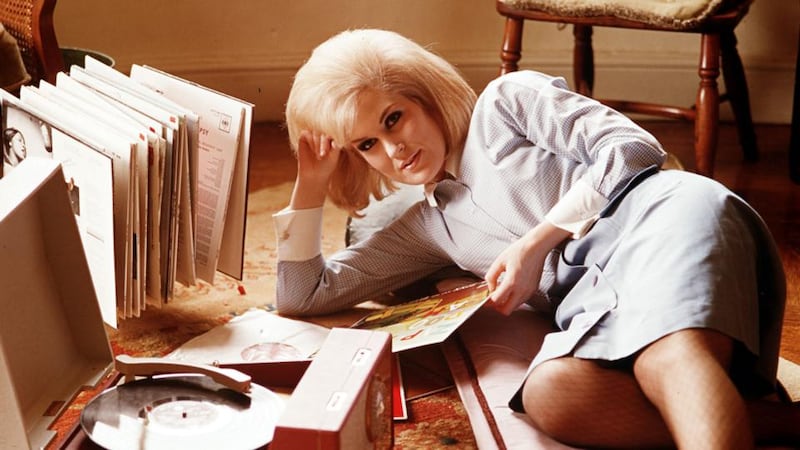Grace O'Malley (1530-1603)
The Abbey, Clare Island, Co Mayo
Pirate queen and warrior princess, clan chieftain and matriarch, Grace O'Malley had the type of dramatic life that demands a spectacular resting place – and this 12th-century Cistercian abbey, perched on a headland 5km off the Mayo coast, fits the bill to perfection. An ornate plaque in the north wall of the chancel marks the spot where the body of Gráinne Mhaol is said to be interred. Even if you don't believe she's really there, the abbey is worth a visit for its glorious medieval wall and ceiling paintings.
__________
0 of 18
Phil Lynott (1949-86)
St Fintan's, Sutton
A legend of more recent vintage, Philip Parris Lynott provided Irish music with a fistful of iconic tunes: The Boys Are Back in Town, Jailbreak, Killer on the Loose. The Thin Lizzy vocalist was himself an icon, carrying his mixed-race heritage with style and grace at a time when ethnic diversity wasn't Ireland's strong point. The granite slab that marks his grave, engraved with Celtic motifs by his artist friend Jim Fitzpatrick, is regularly swathed in photographs, jewellery and other items of affectionate tribute.
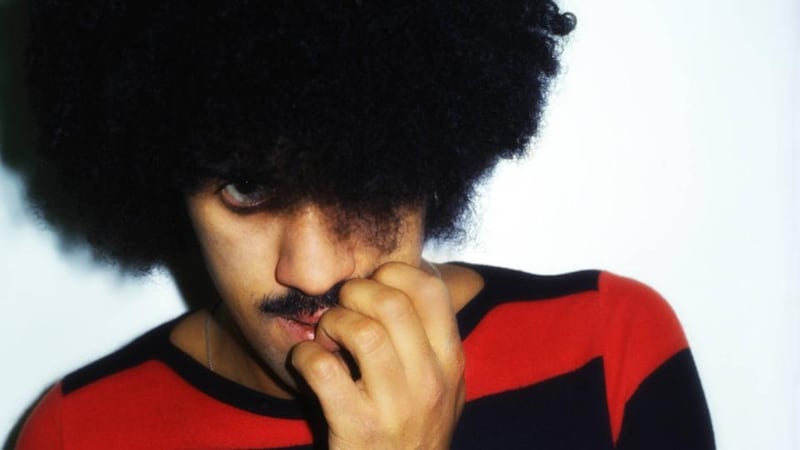
__________
Brian Boru (941-1014)
St Patrick's Cathedral, Armagh
Long regarded as the man who delivered Ireland from the Vikings, this Munster monarch has been re-evaluated by modern historians. But whatever way you look at him, Brian of Béal Bóraimhe emerges from the mists of time as easily the best known of Ireland's high kings, while the tale of his death – murdered while at prayer in his tent during the Battle of Clontarf – is about as royally poignant as it gets. After the battle his body was spirited to Armagh, where a plaque in the north wall of the cathedral marks his burial place.
__________
Dermot Morgan (1952-98)
Deansgrange, Dublin
Down with that sort of thing. What sort of thing? Death from a heart attack at 45, that's what. The final episode of Father Ted was barely in the bag when Dermot Morgan was felled out of the blue. Two decades later the much-loved TV comedy has travelled into the pop-culture stratosphere. Morgan's ashes are interred in an understated plot at Deansgrange Cemetery; for a flavour of the outrageous character he was, and played, sit in the Joker's Chair in Merrion Square Park, which has to be one of the best memorial statues anywhere, ever.
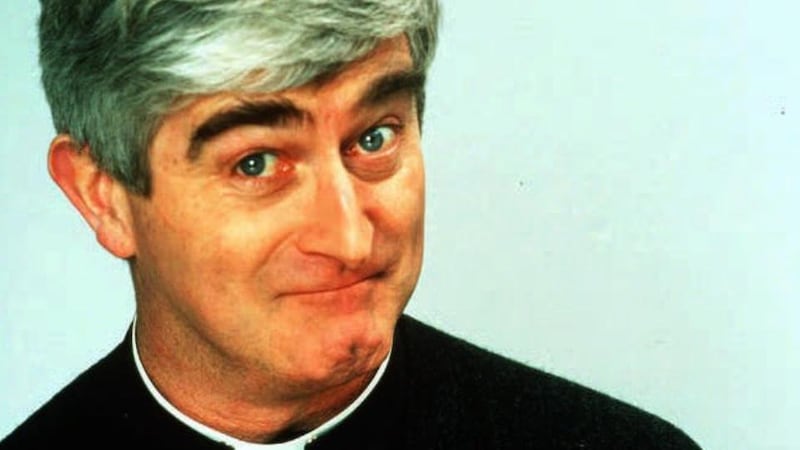
__________
WB Yeats (1865-1939)
St Columba's, Drumcliff, Co Sligo
With its severely plain headstone and that famously forbidding epitaph – "Cast a cold eye on life, on death. Horseman, pass by" – the grave of WB Yeats has long been a place of pilgrimage for poetry fans. Recent revelations about the jumbled identity of the bones contained at the site – Yeats died in France and his body was transferred to an ossuary before being repatriated in 1948 – have somewhat blurred those well-ordered edges. But Drumcliff, nestled between the slopes of Benbulbin and the Atlantic coast, is as serene as ever, and worth a visit any day of the week.
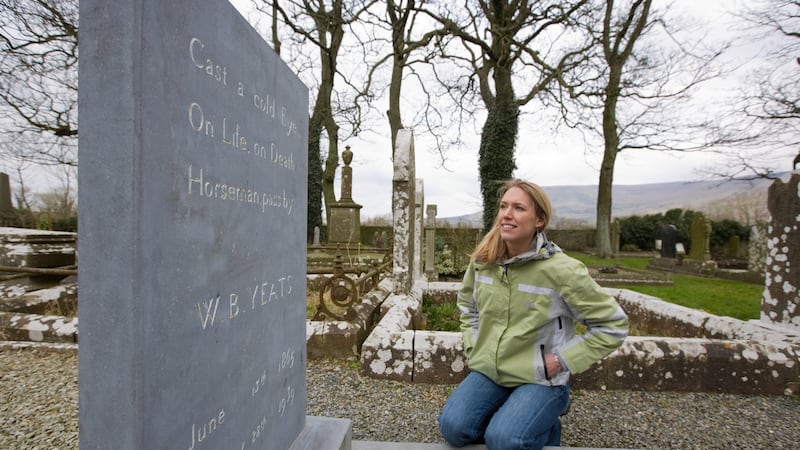
__________
Tom Crean (1877-1938)
Ballinacourty, Annascaul, Co Kerry
It's one of the greatest stories of human exploration – Ernest Shackleton struggling across the uncharted peaks of South Georgia to bring help to the crew of the Endurance – and Tom Crean was at its heart. That was just one of the three famously arduous Antarctic expeditions that the quiet Kerryman, who enlisted in the British navy at the age of 15, was to survive. It took the complications that followed a burst appendix to kill him at the age of 61. He is buried in his family tomb in the suitably understated cemetery near Annascaul.
__________
St Patrick (fifth century)
Cathedral of the Holy Trinity, Downpatrick, Co Down
A plethora of sites are associated with the life and times of our national patron saint, from the Rock of Cashel to Croagh Patrick, Slemish Mountain to the Hill of Slane, Saul Church to Lough Derg. Tradition has it, though, that his actual body lies in the grounds of Down Cathedral, where it has been marked since 1900 by a gargantuan slab of Mourne granite.
__________
Peig Sayers (1873-1958)
Dún Chaoin, Dingle peninsula, Co Kerry
"I am an old woman now," begins Peig Sayers's famously bleak memoir of life on the Great Blasket island, "with one foot in the grave and the other on its edge . . ." Mention of the book can send a shiver down the spine of any Irish citizen who was forced to plough through it at secondary school; the woman herself, by contrast, was a lively storyteller known for her animated gestures and sense of humour. In death she lies in what must be one of the romantic burial grounds on the planet, gazing towards the islands and the sun setting over the ocean beyond.
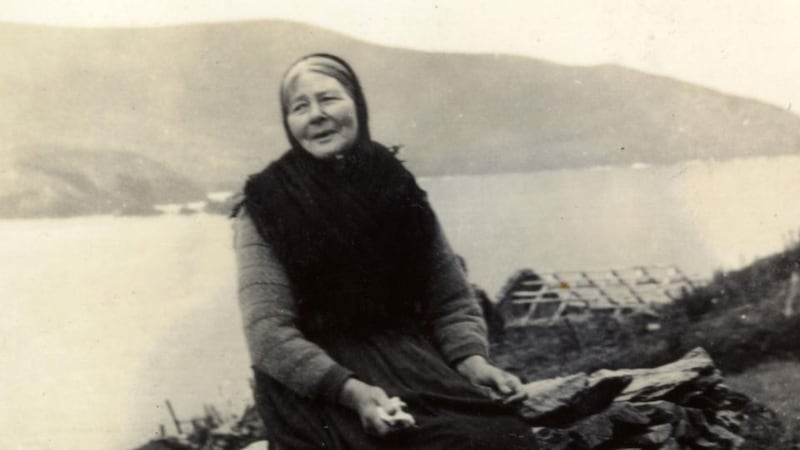
__________
Arkle (1957-70)
Irish National Stud, Tully, Co Kildare
Arkle won 27 of his 36 races and took three consecutive Cheltenham Gold Cups in the 1960s, making him the second-most-famous horse in Irish racing history. Shergar, whose body has never been found, wins the race for the most mysterious, but Arkle was probably the best loved, certainly in his later years, when he received fan mail by the sackload and beat The Beatles to the "most popular personality of the year" slot in a 1966 UK magazine poll. His skeleton – yes, the actual skeleton – is on display at the horse museum at the Irish National Stud.

__________
Arthur Guinness (1725-1803)
Oughterard, Co Kildare
The creator of the world's best-known porter was born in Celbridge, spent his first working years as a brewer of ale in Leixlip and is buried, along with his wife, Olivia, and their children and grandchildren, in a country graveyard in Co Kildare. "Their memory will long be cherished by a numerous circle of friends, relations and descendants," reads the inscription. And by the increasing number of visitors who come to toast Arthur Guinness's tall, slim headstone with a pint of the immortal black stuff.
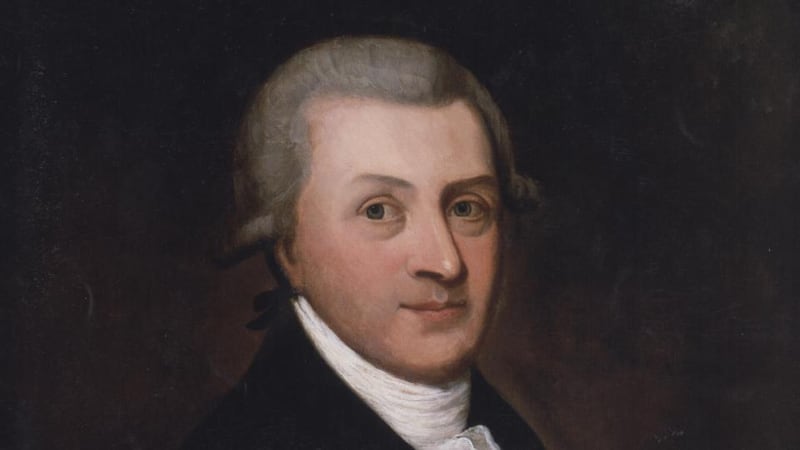
__________
Lord Haw-Haw (1906-46)
Bohermore, Galway
William Joyce, aka Lord Haw-Haw, worked for the German ministry of public enlightenment and propaganda during the second World War; he had an estimated six million radio listeners at the height of his nefarious broadcasting career. Joyce was hanged at Wandsworth Prison in 1945, but – at the request of his daughter – was reburied in Bohermore Cemetery, in Galway, August 1976. The family had strong Galway connections and lived there between 1909 and 1921. The cemetery, incidentally, is known locally as the "new" cemetery; it opened in 1880.
__________
John McCormack (1884-1945)
Deansgrange, Dublin
A crossover artist before there was such a thing as crossover, John McCormack was made a papal count by Pope Pius XI by way of recognition for his charity work, an honour that is commemorated in the papal cross emblazoned on his tombstone in Deansgrange. He had a fistful of lesser knighthoods from the Vatican as well. When it came to song, however, McCormack was a king, delivering the pop songs of his day as effortlessly as German art songs and Mozart arias.
__________
Jonathan Swift (1667-1745)
St Patrick's Cathedral, Dublin
A simple brass plaque in the floor at the west end of St Patrick's Cathedral marks the burial place of Jonathan Swift, dean of the cathedral for more than 30 years, author of Gulliver's Travels and prolific satirist. His epitaph – he wrote that, too – is on the wall opposite the grave: engraved in black Kilkenny marble, it declares him to be "where savage indignation can no longer tear his heart". Various other artefacts associated with Swift are also on display, including two death masks, some early editions of his writings and a cast of his skull.
__________
George Best (1946-2005)
Roselawn, Belfast
The first rock-star footballer, Best was as famous for his off-pitch drinking and womanising as for his lightning pace, magical sense of balance and ability to score goals with both feet. His career peaked in 1968, when Manchester United won the European Cup and their mesmerising number seven was named England's footballer of the year and European player of the year. Bestie never managed to beat the booze, however, and died of liver disease in 2005. His funeral was a phenomenon, and his grave is still much visited by fans of all ages and denominations.
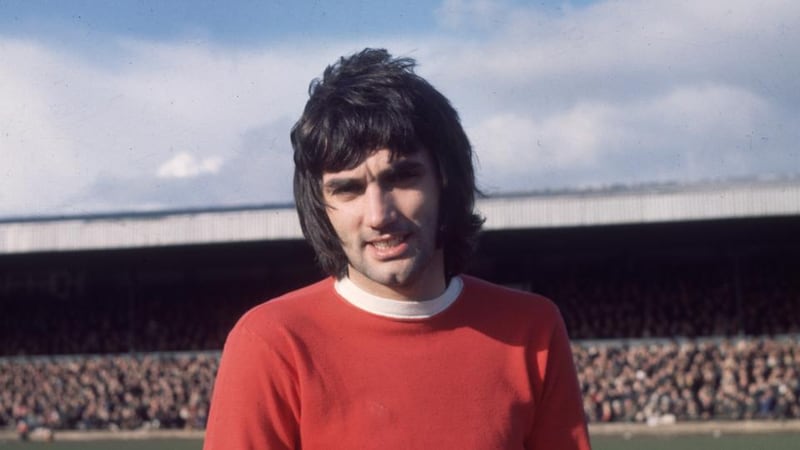
__________
Queen Medb (first century)
Knocknarea Mountain, Co Sligo
The remains of Queen Medb – protagonist of our most famous ancient saga, the Táin Bó Cüailnge, or Brown Bull of Cooley – are said to lie beneath the 10m-high pile of stones on the summit of Knocknarea. The largest unopened cairn in Ireland, it may equally be a passage tomb that dates back 3,000 years and has nothing to do with Medb at all. Either way, it's worth the trek up the hill to a spot that been a ritual focal point since neolithic times. Tomb with a view, how are you?
__________
Thomas Clarke (1858-1916)
Arbour Hill Prison, Dublin
Along with Patrick Pearse and Thomas MacDonagh, Tom Clarke was executed at Kilmainham Gaol on May 3rd, 1916. He was the first of 14 leaders of the 1916 Rising to be buried in a communal grave in the old prison yard at Arbour Hill Prison. Despite the barbaric manner of their deaths and interment, the grave site is now an exceptionally dignified and moving place. Immaculate grass covers the plots, and the words of the Proclamation of the Irish Republic are inscribed on a wall of Wicklow granite.
__________
Charles J Haughey (1925-2006)
St Fintan's, Sutton
He served three terms as taoiseach, but that was only the start of the larger-than-life story of the Boss. There were the racehorses and the private islands, the Palladian mansions and the Charvet shirts, the tax evasion, the embezzlement, the disappearance of Brian Lenihan's medical fund, the gunrunning, and much, much more besides. In 2010 his grave became briefly famous when a disgruntled lottery winner danced on it, filmed himself and put the result on YouTube, which, to quote Conor Cruise O'Brien's coinage, was grotesque, unprecedented, bizarre and unbelievable.
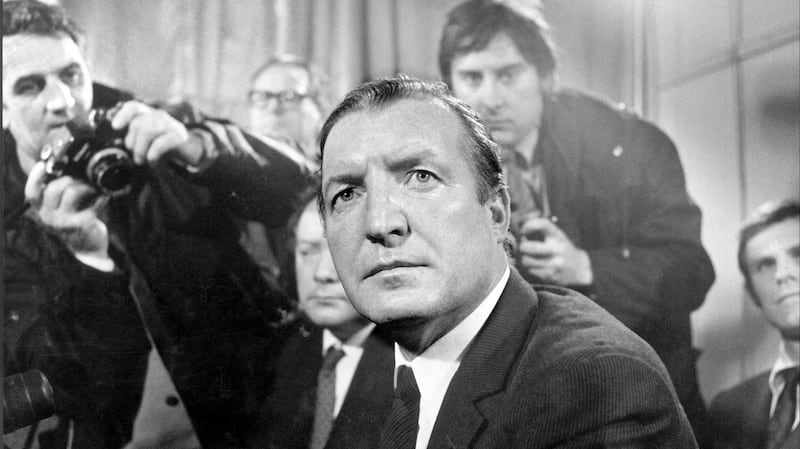
__________
St Valentine (third century)
Whitefriar Street Church, Dublin
The tangled tale of St Valentine makes the most complicated love knot seem like a doddle to unravel. To begin with there were three St Valentines, and there are bits of the saint all over the place, including a church in the Gorbals, in Glasgow. This set of bones, given to Fr John Spratt by Pope Gregory XVI in 1836, along with "a small vessel tinged with the saint's blood", is held in the Carmelite church on Whitefriar Street. Interestingly, the saint is shown holding a crocus rather than a bunch of long-stemmed, greenhouse-grown red roses.
__________
E J Moeran (1894-1950)
Killowen, Kenmare, Co Kerry
His music is almost forgotten, but the story of the English composer Ernest John Moeran is a memorable one. Badly wounded in the first World War, he was plagued by the medical problems caused by a steel plate in his skull. He spent most of his later years in Kenmare, which he loved, despite the ravages of alcoholism and increasing mental instability. One stormy night his body was found floating in the river; at first it was assumed he had fallen in, or died from suicide, but an autopsy revealed he had suffered a huge stroke. His grave is in a beautiful, if neglected, old churchyard; his tombstone reads: "He lies in the mountain country he loved so well."
__________
Elizabeth and Mary Boleyn (17th century)
Clonony Castle, Co Offaly
They're known locally as Queen Elizabeth's cousins – that's Elizabeth I, folks – but nobody knows how these other Boleyn girls come to be buried in the grounds of a Tudor castle in Offaly, or even who they are exactly. The grave was discovered in 1803, and the inscription sends shivers up the spine: "Here under leys Elisabeth and Mary Bullyn . . ." The castle is privately owned but is often open to the public.
__________
Patrick Kavanagh (1904-67)
St Mary's, Inniskeen, Co Monaghan
A ploughshare embedded in concrete is an apt memorial to find on the grave of the famously curmudgeonly poet, who left school at 13 and left Monaghan in his 30s in an attempt to make it in Dublin literary circles – only to make himself, and everyone who knew him, utterly miserable. Happily, Kavanagh ended up among the peaceful hills and lakes of Co Monaghan, right next to the centre that now commemorates his life and work.
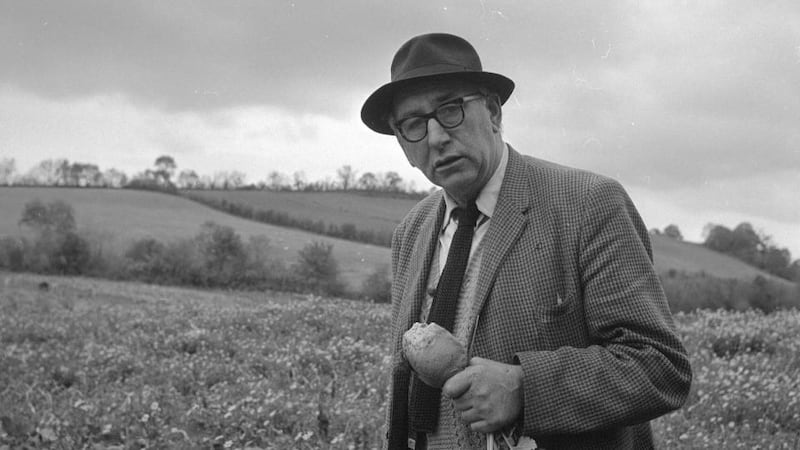
__________
Theobald Wolfe Tone (1763-98)
Bodenstown, Co Kildare
Described by Patrick Pearse as "the holiest place in Ireland" and a place of pilgrimage for republicans for 200 years, the cemetery at Bodenstown, near Sallins, Co Kildare, contains the body of the father of Irish republicanism and founding member of the United Irishmen. Theobald Wolfe Tone was charged with treason for his involvement in the 1798 rebellion. Knowing that he faced execution, Tone requested only that he might "die the death of a soldier" and be shot rather than hanged. The request was refused, and the day before his execution he was wounded in the throat under circumstances that are still unclear. He died eight days later, at the age of 35.
__________
Piers and Margaret Butler (16th century)
St Canice's Cathedral, Kilkenny
There are more Butlers in St Canice's than you'd find at a Downton Abbey cosplay convention. James Butler, second earl of Ormonde, is there and so is Walter, the 11th. Pride of place, however, goes to the eye-catching tomb of the eighth earl of Ormonde, Piers Butler, and his wife, Margaret, countess of Ormonde and Ossory. Their armour-clad effigies are carved on top in black marble, so vividly that they might be about to get up and walk away, accompanied by their faithful dog, who lies at his master's feet. Don't be fooled by the countess's ladylike head-dress. She was one tough cookie, described by contemporaries as "warlike and tall of stature . . . so politic, that nothing was thought substantially debated without her advice".
__________
Turlough O'Carolan (1670-1738)
Kilronan, Keadue, Co Roscommon
The blind harpist, composer and singer who wandered around Ireland for almost half a century is buried in the family crypt of his patrons, the McDermott Roes, at the foot of the Arigna Mountains. O'Carolan loved silly stories, backgammon and drink – his final composition was dedicated to the butler, Flinn, who brought him his ultimate beverage – but who knows what he would have made of the story of his own skull, which was removed from the grave a century after his death and, after many adventures, ended up in the National Museum of Ireland. There's a song in that, for sure.
__________
J G Farrell (1935-79)
St James's, Durrus, Co Cork
When one of the most brilliant young English novelists of his day was swept to his death while fishing from Sheep's Head peninsula, in west Cork, the rumour mill went bonkers. Did he fall? Was he pushed? Assassination? Suicide? It seems now to have been "just" a straightforward tragedy. When the first of his Empire trilogy, Troubles, was awarded the Lost Man Booker Prize (for novels published in 1970), in 2010, Farrell's literary reputation was assured. His grave, in the 18th-century churchyard outside the village of Durrus, is a place of unearthly tranquillity.
__________
Patrick Murphy (1834-62)
Kilbroney, Co Down
Born on a small farm in the Mourne Mountains, Patrick Murphy worked as a docker in Liverpool. But the man who would earn himself the nickname "Giant" Murphy attracted crowds everywhere he went. In 1860 a doctor measured his height as 7ft 3.4in (222cm). Murphy died of smallpox in Marseilles while on tour with a travelling show, but friends brought his embalmed body back to Co Down, where it lies in a cemetery not far from Rostrevor.
__________
Maria Edgeworth (1768-1849)
St John's, Edgeworthstown, Co Longford
The author of the novel Castle Rackrent was a woman of contradictions, working for the relief of tenants during the Famine, and adamant that women should play a full role in public life, yet holding resolutely Tory views on political issues. Born in Oxfordshire, Edgeworth moved to Ireland at the age of five, when her mother died and her father married again. Edgeworth never married. She died of a heart attack at the age of 81.
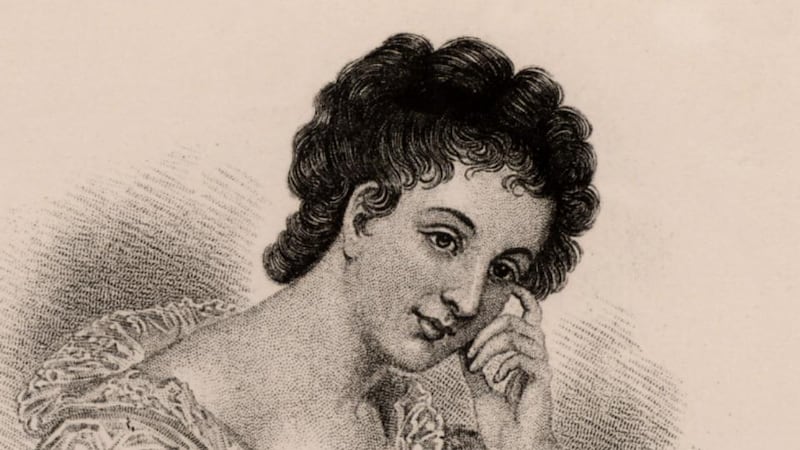
__________
Paddy Clancy (1922-98)
Faugheen, Co Tipperary
The Clancy Brothers and Tommy Makem were instrumental in changing the face of Irish folk music in the US. Paddy Clancy's obituary in the New York Times sums it up nicely: "They wore Aran sweaters and sang rollicking versions of rebel songs, drinking songs and love songs, interspersed with tall tales and poetry recitations." When Clancy retired from the music scene, in 1968, he returned to Tipperary, where he had bought a dairy farm, and worked with rare breeds of cattle. "Lay Me Down in My Native Place," his gravestone sings.
__________
Lady Augusta Gregory (1852-1932)
Bohermore, Galway
It took breast cancer to fell the formidable Lady Gregory, at the age of 80, after a lifetime spent bridging the chasm between her privileged Anglo-Irish background and her burgeoning Irish nationalism. According to her own instructions, the founder of the Abbey Theatre and patron of WB Yeats was given a simple send-off and is buried in an unadorned oak coffin in a tree-shaded corner of the Protestant plot at the Prospect Hill cemetery in Galway.

__________
Roger Casement (1864-1916)
Glasnevin, Dublin
"Don't let me lie here in this dreadful place," Roger Casement told his cousin, Gertrude Bannister, as he awaited execution in Pentonville Prison, in London, in the summer of 1916. It took until 1965 for his remains to be returned by the British government; he was given a state funeral and buried in Glasnevin. He's still a divisive and controversial figure, but at a ceremony on Banna Strand, in Kerry, earlier this year, to mark the centenary of his arrest, President Michael D Higgins spoke of Casement's "passionate defence of the human dignity of those who were the victims of a brutal world order". Which is good enough for us.
__________
Sheridan Le Fanu (1814-73)
Mount Jerome, Dublin
Everyone knows about Dracula, but few could name the lesbian vampire novella by Sheridan Le Fanu that preceded Bram Stoker's masterpiece by 25 years and influenced it in major ways. (It's Carmilla, by the way.) Born in Dublin, Le Fanu was of Huguenot descent. After the death of his wife he became a recluse, flitting around the Merrion Square area in the evenings like one of his own ghosts. And what ghosts: Le Fanu's, an English critic wrote, are "the most disquieting of all ghosts", which "scratch away with malignant patience in the guarded mind". He lies in Mount Jerome Cemetery. (Or does he?)
__________
Cecil Frances Alexander (1818-95)
Derry City Cemetery, Co Derry
The woman who wrote the holy trinity of Anglican hymns – All Things Bright and Beautiful, Once in Royal David's City and There Is a Green Hill Far Away – was born in Dublin in 1818, but her birth date is sometimes given as 1825, because she married a clergyman who was six years younger than she was, which worried her respectable family no end. He went on to become bishop of Derry, then primate of All-Ireland. She used the money from her bestselling hymnals to develop a district-nursing service and to help build a centre for the deaf in Strabane.
__________
Oliver Reed (1938-99)
Bruhenny, Churchtown, Co Cork
Celebrated for his off-screen drinking as much as for his filmography, the English actor lived life as though it was one long party. And Oliver Reed appears to be still imbibing in the afterlife: a couple of years ago his son told a newspaper that nothing would grow on his dad's grave because visitors pour so much booze on it. Reed, who died suddenly while filming Gladiator in Malta, is buried in the 13th-century graveyard at Churchtown, near his home at Castle McCarthy and – naturally – within strolling distance of his favourite pub, O'Brien's.
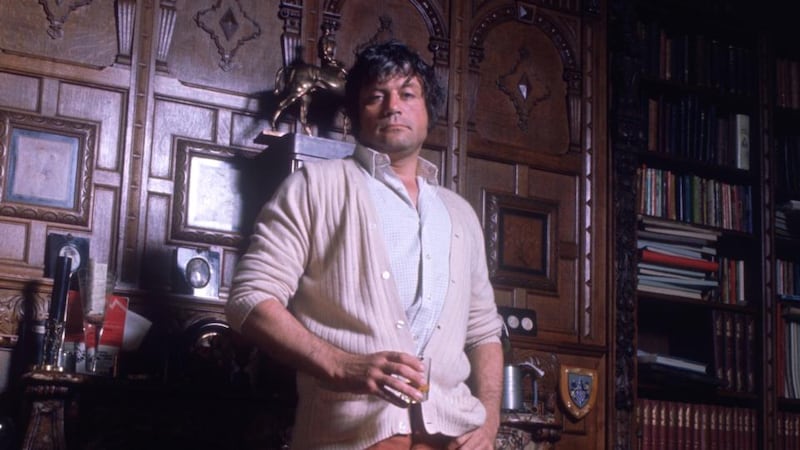
__________
Brian O'Nolan (1911-66)
Deansgrange, Dublin
Born in Strabane, Co Tyrone, O'Nolan was a key figure in 20th-century Irish literature, writing novels under the nom de plume Flann O'Brien and satirical columns in this newspaper as Myles na gCopaleen. With his day job in the department of local government he supported a family of 10 siblings after the early death of their father. An alcoholic for much of his life, he suffered from throat cancer and died of a heart attack. He is buried in Deansgrange with his parents and his wife.
__________
Jack Doyle (1913-78)
Old Church Cemetery, Cobh, Co Cork
Known as the gorgeous Gael, Doyle was a professional boxer, a successful tenor and a Hollywood film star. He was also extraordinarily generous and fatally attracted to alcohol – a knockout combination that meant that despite a number of starring roles, both in the ring and on the screen, he ended up dying penniless in a London hospital. Cork Ex-Boxers Association came to the rescue and brought his body back to his native Cobh, his coffin topped by his trademark red carnation.
__________
Strongbow (1130-76)
Christ Church, Dublin
Richard de Clare, second earl of Pembroke, is notorious nowadays as the Welsh warlord who brought an invading force of Anglo-Normans into Ireland in 1170. His contemporaries weren't mad about him, either, if this description by a medieval chronicler is anything to go by: "His complexion was somewhat ruddy and his skin freckled; he had grey eyes, feminine features, a weak voice, and short neck." Strongbow's rather snazzy tomb can be found halfway along the nave of Christ Church. Beside him, poignantly, lies a smaller figure, which may be one of his children.
__________
Bridget Cleary (1869-95)
Cloneen, Co Tipperary
In March 1895, the wife of a cooper went missing from her cottage near Clonmel in Co Tipperary. A week later her body was discovered in a shallow grave, broken and badly burned. Bridget Cleary had been ritually starved, beaten and horrifically abused by her husband, Michael, and other family members, who suspected her of being "possessed by a fairy". It was one of the most infamous of all Irish murder cases and it became a political cause celebre, with the Tory press using the killing to discredit the cause of home rule by playing on the notion of a savage Irish peasantry.
__________
J M Synge (1871-1909)
Mount Jerome, Dublin
As a young man John Millington Synge walked through Germany, Italy and France, where he met WB Yeats – in Paris – in 1899. Yeats sent him west to the Aran Islands; the rest is Irish literary legend. With the six plays of his brief career as a playwright – a lymphatic sarcoma killed him at the age of 37 – Synge changed the face of Irish theatre forever. Or, as Yeats put it, "he made word and phrase dance to a strange rhythm".
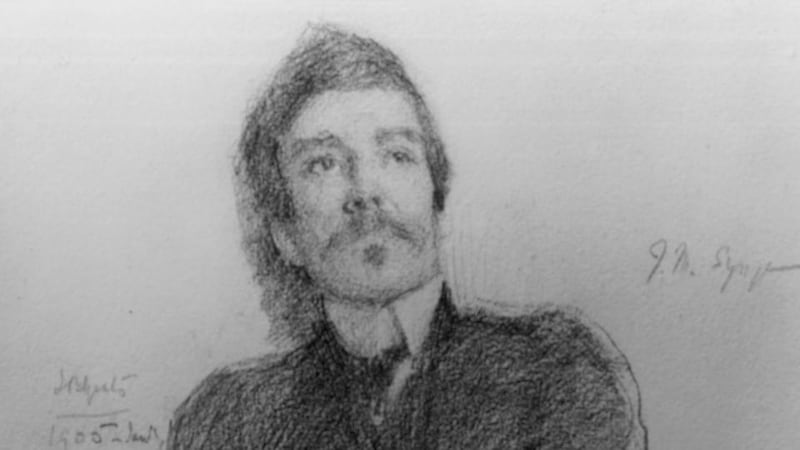
__________
Liam Whelan (1935-58)
Glasnevin, Dublin
He was just 22, and he hated flying. But as a member of Manchester United's all-conquering Busby Babes Liam Whelan had no option but to join his team-mates for the second leg of the match against Red Star Belgrade in the 1957-8 European Cup quarter-final. The plane crashed on the return journey after a refuelling stop at Munich airport, killing Whelan and seven other United players, as well as three of the coaching staff.

__________
Bobby Sands (1954-81)
Milltown, Belfast
Bobby Sands joined the republican movement at the age of 18, after years of intimidation and threats against him and his family. He was, briefly, MP for Fermanagh and South Tyrone, and the author of lyrics for several well-known songs, including Back Home in Derry, which has been recorded by Christy Moore, among others. He was arrested on suspicion of being involved in a bombing in the North, and died in the Maze Prison after 66 days on hunger strike. His death, and that of nine others, focused international attention on the situation in the North.
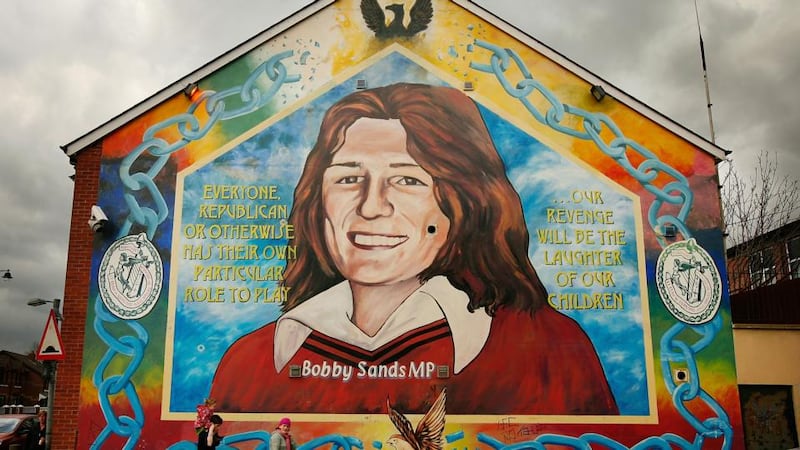
__________
Mary O'Connell (1776-1836)
Derrynane Abbey, Co Kerry
The Liberator is buried in Glasnevin Cemetery, but we had to include the grave of his wife, Mary, in her own right – partly because theirs was such a happy marriage, partly because the grave site must be one of the most gloriously situated on the planet. The ruins of Derrynane Abbey, near the town of Caherdaniel and Daniel O'Connell's birthplace, Derrynane House, are on an offshore island, accessible only when the tide is out. Little enough is known about Mary O'Connell, but a letter written to her by her husband in 1829 begins: "My own darling love." Maybe that's enough.
__________
Gerard Manley Hopkins (1844-89)
Glasnevin, Dublin
The Jesuit priest, poet and classics teacher came to Dublin in 1884, when he got a job teaching Latin and Greek at University College Dublin. Hopkins found the city to be "a joyless place", fell into a clinical depression and – having written the "terrible sonnets", 12 poems that chronicle his alienation and despair – died of typhoid fever five years later. Bizarrely, his last words were: "I am so happy, so happy . . ." Maybe he was just relieved to be getting away from it all. His grave is in the Jesuit plot at Glasnevin, unmarked, although his name is on a large granite crucifix nearby.
__________
Samuel Cohen (1834-79)
Ballybough Cemetery, Fairview, Dublin
Among the Jewish immigrants who came to Ireland in the 18th century were jewellers, painters, musicians and chocolate makers. Rosetta and Solomon Cohen arrived from Prussia in the 1770s, and their descendants – known around Dublin as "the pencil Cohens" – made their mark on Ireland by introducing us to the glories of the graphite pencil. Several generations of Cohens are buried in the old Jewish cemetery at Ballybough, where their headstones feature a pair of carved hands, a traditional symbol of relationship to the biblical high priest Aaron.
__________
Paul Henry (1877-1958)
St Patrick's, Enniskerry, Co Wicklow
We associate the Belfast-born painter with the monochromatic images of Connemara, full of light and sky, that he produced during his time on Achill Island. Later, however, he settled in Wicklow, and he was buried opposite the entrance to the Powerscourt estate in a spot so picturesque that it might have come straight out of one of his canvases. The granite headstone marking the grave is as modest as he, apparently, was in life. "In loving memory Paul Henry, RHA," it says.
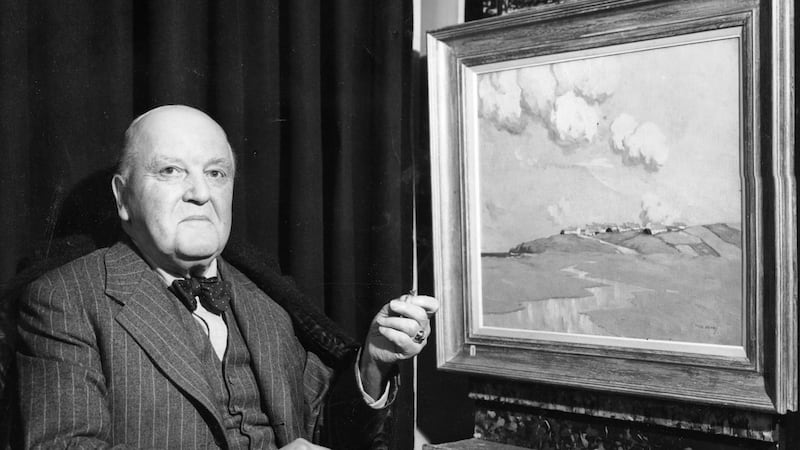
__________
Lord Edward FitzGerald (1763-98)
St Werburgh's Church, Dublin
Explorer, revolutionary, aristocrat, congenial man about town: the leader of the United Irishmen is the epitome of the romantic hero. When he died after fighting to resist arrest in 1798, the authorities refused to allow his body to travel to his native Kildare for fear of sparking a fresh round of unrest, so he was buried in the vaults of St Werburgh's at dead of night. Half a century later FitzGerald's captor, Major Sirr, followed him into the city-centre cemetery.
__________
Hermann Görtz (1890-1947)
German War Cemetery, Glencree, Co Wicklow
The beautifully maintained German cemetery at Glencree is a monument to the sadness and pointlessness of war; most of the graves there are marked simply "one German soldier" or "two German soldiers". One who is named – ironically, given his life's work – is the spy Hermann Görtz. After parachuting into Ballivor, Co Meath, in 1940 he lived in hiding for a year before being interned in Athlone. In 1947, on being told he was to be repatriated to Germany, Görtz took prussic acid, died almost immediately and was hurriedly buried in Deansgrange. In 1974, under cover of darkness, a group of German ex-army officers exhumed his remains and reburied them in Glencree.
__________
Fr Browne (1880-1960)
Glasnevin, Dublin
A chaplain on the battlefields of Flanders and immortalised as "Mr Browne the Jesuit" in James Joyce's Finnegans Wake, Fr Francis Mary Hegarty Browne is best known these days for the photographs he took on Titanic in the spring of 1912. (Luckily for him he got off at Cobh before the ship sailed to its doom.) Fr Browne went on to take a whopping 42,000 photographs in his long life, recording scenes in nearly every parish and town in Ireland, as well as in the Middle East, South Africa and even cattle stations in Australia, making him Ireland's most important 20th-century photographer.
__________
Sir Edward Carson (1854-1935)
St Anne's Cathedral, Belfast
Born in Harcourt Street, Dublin, Carson was educated at Wesley College in Dublin and at Trinity, where he met Oscar Wilde. As a barrister he would later defend Wilde's adversary the marquess of Queensberry, subjecting Wilde to a vicious cross-examination – although he had nothing to do with the subsequent prosecution of Wilde for sodomy, and actually tried to prevent it. A leader of the anti-home rule movement in Westminster and a key figure in the formation of the UVF, he was given a state funeral at St Anne's Cathedral in Belfast. Soil from each of the six counties was scattered on his coffin. He is the only person to be buried in the cathedral.
__________
Martin Cahill (1949-94)
Mount Jerome, Dublin
For nearly two decades Cahill was suspected of being behind many of the major crimes committed in Ireland, and his trademark jokes – such as dropping his trousers to reveal a pair of Mickey Mouse boxer shorts – gained him a media profile more suited to a master chef than a master criminal. His life formed the basis for two international feature films, The General and Ordinary Decent Criminal. The crime caught up with him in the end, and he was murdered in 1994.
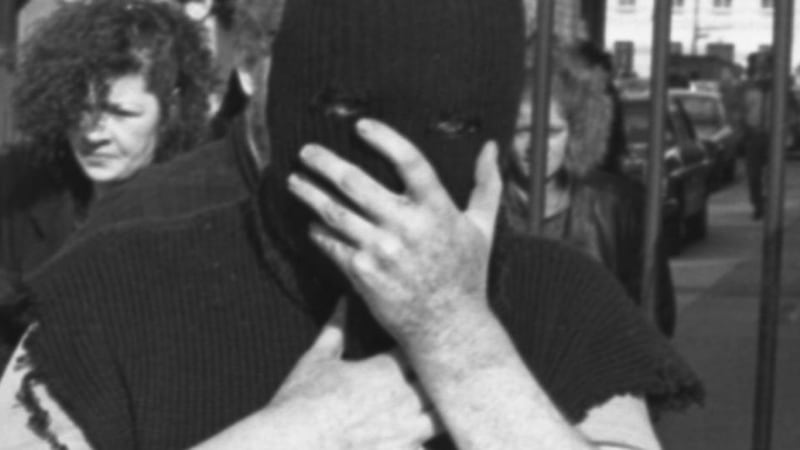
__________
Dusty Springfield (1939-99)
Cliffs of Moher, Co Clare
Okay, you might think this is a bit of a cheat. But after all those bodies, bones, murders, corpses and people being dug up at dead of night and spirited away somewhere else entirely, I'm entitled to pick one to cheer myself up. And what could be more cheering than the memory of Dusty Springfield, aka Mary Isobel Catherine Bernadette O'Brien? Born to a London-dwelling family with Kerry roots, she grew up to be one of the most kick-ass soul singers of all time. Some of her ashes were buried in St Mary's Church in Henley-on-Thames; the rest were brought back to Ireland and scattered over the Cliffs of Moher. Which is a bit Thelma & Louise – and totally cool.
